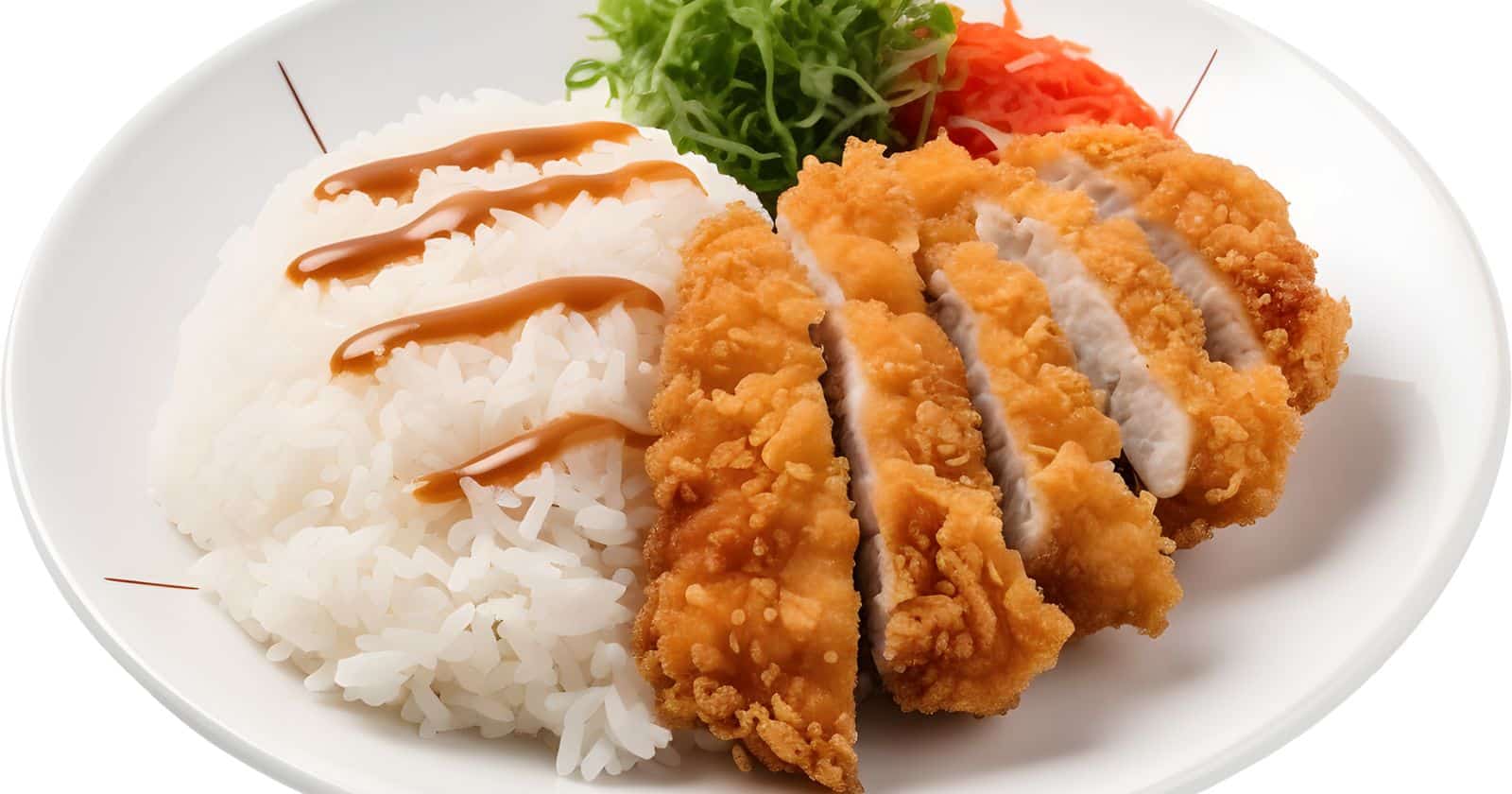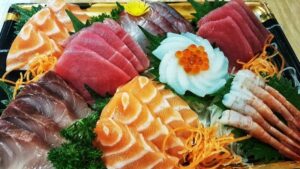Many people have the misconception that all Asian cuisine is unhealthy and fattening. However, Japanese food is a shining example of the opposite. With its emphasis on natural ingredients and healthy cooking methods, Japanese dishes can actually be a great choice for those watching their weight.
From the abundance of seafood and vegetables to the inclusion of whole grains like rice and noodles, the Japanese diet offers a variety of nutrients while keeping unnecessary sugars and fats at bay.
In the upcoming sections of this blog post, we will delve deeper into the reasons why Japanese food is not fattening and how it can contribute to a balanced diet. We will discuss the traditional Japanese diet and its foundations, highlighting the portion control and nutrient density of the meals.
Additionally, we will touch upon some popular Japanese dishes that may be higher in calories, and provide tips on making healthier choices and controlling portion sizes. By the end, you will have a comprehensive understanding of how Japanese food can fit into a healthy lifestyle without causing excessive weight gain.
The Foundations of the Traditional Japanese Diet
The traditional Japanese diet is built upon the principles of using fresh, local ingredients and minimal processing to showcase the natural flavors of the food. It includes a variety of staples such as fish, rice, noodles, and vegetables. Seafood, particularly fish, plays a crucial role as a primary source of protein in Japanese cuisine. Tofu, fruits, seaweed, eggs, and meat are also common components, although they are less prominent.
The traditional Japanese diet, known as Washoku, is characterized by its high consumption of fish and soybean products, while limiting the intake of animal fat and meat. The focus is on enhancing the palatability of dishes by effectively utilizing the umami taste. Umami is the fifth basic taste, which can be described as a savory or meaty flavor.
One of the key features of the traditional Japanese diet is the use of fish broth, which is prepared and enjoyed in various ways. Japanese chefs take great pride in developing their individual style with broths, contributing to the unique flavors of their dishes.
The foundations of the traditional Japanese diet go beyond just the selection of foodstuffs and include the preparation methods, balanced nutrition, and the value placed on hospitality, health, and family ties.
The diet is rich in fat-soluble vitamins derived from seafood and organ meats, as well as minerals obtained from fish broth. Additionally, lacto-fermented foods are incorporated into the diet, providing further nutritional benefits.
Portion Control and Nutrient Density
Portion control and nutrient density are key factors in maintaining a healthy diet. The Japanese diet is a prime example of how these factors can be incorporated effectively. Japanese cuisine is characterized by smaller portion sizes and an emphasis on whole-natural foods packed with essential vitamins and minerals.
Portion control plays a vital role in preventing overeating. Japanese meals consist of smaller main and side dishes, which helps to regulate calorie intake and avoid excessive consumption. By adopting smaller portion sizes, individuals can better manage their weight and prevent the negative health effects associated with overeating.
In addition to portion control, the Japanese diet is known for its nutrient density. Japanese meals are centered around whole foods, which are naturally rich in essential nutrients. The emphasis on seasonal produce ensures that the food is at its peak nutritional value, providing a wide range of vitamins and minerals. The inclusion of fish and seafood in the diet adds omega-3 fats, which promote brain, eye, and cardiovascular health.
Mindful eating is another aspect of the Japanese diet that contributes to portion control and nutrient density. It encourages individuals to be present and fully aware of their eating habits. This practice helps to prevent mindless snacking and allows individuals to savor and appreciate the flavors of each bite. This mindful approach to eating can aid in weight management and overall well-being.
Abundant Seafood and Vegetables
The traditional Japanese diet is renowned for its emphasis on abundant seafood and vegetables. This dietary pattern not only contributes to the unique flavors of Japanese cuisine but also brings numerous health benefits. With seafood and plant-based ingredients playing a central role, the Japanese diet is remarkably low in calories and high in essential nutrients.
Seafood:
- Fish and shellfish are major sources of protein in Japan, providing essential amino acids for muscle growth and repair.
- Seafood is rich in omega-3 fatty acids, which are beneficial for heart health, brain function, and reducing inflammation in the body.
- The high protein content in seafood helps promote satiety, preventing overeating and aiding in weight management.
- Consumption of fish has been linked to a lower risk of chronic diseases, including cardiovascular issues and certain types of cancer.
Vegetables:
- The Japanese diet incorporates a wide variety of vegetables, including leafy greens, root vegetables, and seaweed, which are packed with vitamins, minerals, and dietary fiber.
- Vegetables are often prepared in dashi, a flavorful broth made from dried fish and sea vegetables, enhancing their taste and making them more enjoyable to eat in larger quantities.
- The fiber in vegetables aids in digestion, promotes regular bowel movements, and supports overall gut health.
- Vegetables contribute to a lower overall calorie intake, as they are low in fat and rich in nutrients, making them an integral part of weight management.
Health Benefits:
- The Japanese diet is low in highly processed foods, added sugars, and unhealthy fats, contributing to lower rates of obesity and related conditions.
- The consumption of raw fish, such as in sushi and sashimi, ensures the retention of essential nutrients that may be lost during cooking processes.
- The combination of abundant seafood, vegetables, and minimal processing contributes to a nutrient-dense diet that promotes healthy aging and longevity.
- The Japanese population has one of the highest life expectancies in the world, and their dietary habits are recognized as a contributing factor.
Whole Grains: Rice and Noodles
Whole grains, such as rice and noodles, are essential components of the Japanese diet. Japanese cuisine embraces a wide variety of whole-grain foods, which have influenced the delicious cuisines in many Asian countries. Let’s take a closer look at the significance of whole grains like rice and noodles in the Japanese diet.
Noodles Made from Whole-Grain Flour:
Japanese noodles like udon and soba are made from healthy whole-grain flours. Udon noodles are crafted from wheat, while soba noodles are made from buckwheat. These whole-grain noodles offer a wholesome and nutritious alternative to refined flour-based noodles.
Rice as a Primary Source of Carbohydrates:
Rice holds a prominent place in the Japanese diet, providing the primary source of carbohydrates. Japonica short-grain rice is the most commonly consumed rice variety in Japan. It is known for its stickiness and is often enjoyed alongside various dishes.
Whole Grains in a Balanced Traditional Diet:
Traditional Japanese cuisine promotes the consumption of whole or minimally processed foods. The diet mainly consists of fish, seafood, seaweed, rice, soy, fruit, and vegetables, with small amounts of other animal products. By incorporating whole grains like rice and noodles, the Japanese diet emphasizes balance and the consumption of natural, nutrient-rich foods.
The Japanese diet is renowned for its focus on whole grains, such as rice and noodles, as a significant source of carbohydrates. It encourages a well-rounded approach to eating, incorporating whole, minimally processed foods that are low in added sugars and fats.
The macrobiotic diet, a Japanese concept for dietary balance, also emphasizes the importance of whole grains. With a balanced approach to eating, the Japanese diet allows individuals to enjoy delicious meals while maintaining overall health and wellness.
Healthier Choices and Portion Sizes
The Japanese diet promotes healthier choices and smaller portion sizes, following the principle of Harahachi-bunme. Japanese cuisine values a variety of tastes in smaller quantities rather than large servings. This traditional diet is abundant in vegetables, has smaller portion sizes, and is naturally low in added sugar and fat.
These factors contribute to its low calorie count, making it a healthier choice. Moreover, the Japanese culture encourages eating until only 80% full, which helps prevent overeating and aids in achieving a calorie deficit necessary for weight loss.
The Japanese food guide spinning top serves as a useful tool to indicate the recommended daily servings for each food group. Accompanied by an illustrated chart of foods and dishes to fulfill these recommendations, it assists people in making healthier choices and maintaining portion control. Following this guide can help individuals create a nutritionally balanced diet.
While Japanese diets are generally safe and healthy, it is important to be mindful of portion sizes and sodium levels. By being cautious about the quantity of food consumed and monitoring sodium intake, individuals can maintain a balanced and health-conscious diet.
Popular Japanese Dishes that May be Higher in Calories
Japanese cuisine is widely known for its healthy and balanced nature, but there are certain dishes that may be higher in calories and fat. While these dishes can still be enjoyed in moderation, it’s important to be mindful of their calorie content. Here are some popular Japanese dishes that can pack a calorie punch:
- Tonkatsu: This deep-fried breaded pork cutlet is a delicious indulgence, but it can contain up to 400 calories per 100g serving. The combination of deep-frying and breading adds to its calorie content.
- Tempura: This light and crispy dish typically consists of deep-fried seafood or vegetables. While it’s a popular choice, each piece of tempura can contain up to 160 calories. The batter used for frying contributes to its calorie count.
- Yakitori: These grilled chicken skewers are a staple of Japanese street food. Each skewer can contain up to 70 calories, mainly from the chicken and sometimes from the sauce used for flavoring.
- Ramen: A beloved noodle soup dish, ramen’s calorie content can vary depending on the broth and toppings. Some versions can be high in calories and sodium due to added fatty meat, fried toppings, and rich broth.
- Sushi rolls: While sushi itself is generally healthy, certain rolls can be higher in calories due to added fillings and sauces. Rolls like rainbow rolls or Las Vegas rolls, with their various fillings and sauces, can be a higher-calorie choice.
It’s important to remember that enjoying these dishes in moderation is key. Along with these higher-calorie options, there are many healthier Japanese dishes that are lower in calories and fat. Options like miso soup, sashimi, and soba noodles can be great choices to balance out your diet.
Tips for Incorporating Japanese Food into a Healthy Lifestyle
Incorporating Japanese food into a healthy lifestyle can be a great way to enjoy delicious and nutritious meals. Here are some tips to help you get started:
- Emphasize Fresh Vegetables: Japanese cuisine is known for its abundance of fresh vegetables. Incorporate a variety of vegetables into your meals, both cooked and raw. This will provide you with essential vitamins, minerals, and dietary fibers while adding vibrant colors and flavors to your dishes.
- Include Grains Daily: Grains, particularly rice, are a staple in Japanese cuisine. Eating grains every day can provide you with a steady supply of energy from carbohydrates. Choose whole grains like brown rice, quinoa, and barley for added fiber and nutrients.
- Follow a Balanced Diet: The Japanese food guide spinning top is a helpful tool to structure your meals. It recommends combining vegetables, fruits, milk products, beans, and fish in your diet. This balanced approach ensures you get a wide range of nutrients while limiting the consumption of meat, dairy, and processed snacks.
- Opt for Whole, Minimally Processed Foods: To maintain a healthy lifestyle, focus on whole and minimally processed foods. Japanese cuisine is known for its use of fresh and seasonal ingredients. Prioritize nutrient-rich foods like seafood, vegetables, and fruit, and reduce the intake of processed foods that contain unhealthy fats and oils.
- Practice Portion Control and Mindful Eating: Japanese culture emphasizes mindful eating and smaller portion sizes. Instead of large meals, try having several smaller meals throughout the day. This approach can help you foster a healthy relationship with food, prevent overeating, and maintain a balanced diet.
Incorporating Japanese food into a healthy lifestyle offers numerous benefits. By following these tips, you can enjoy the flavors of Japanese cuisine while nourishing your body with nutritious and well-balanced meals.





